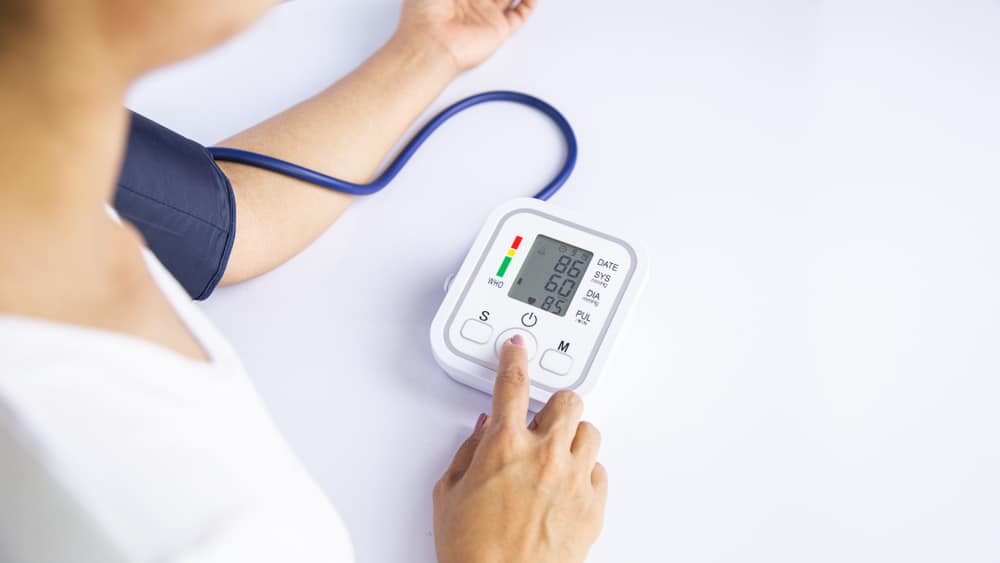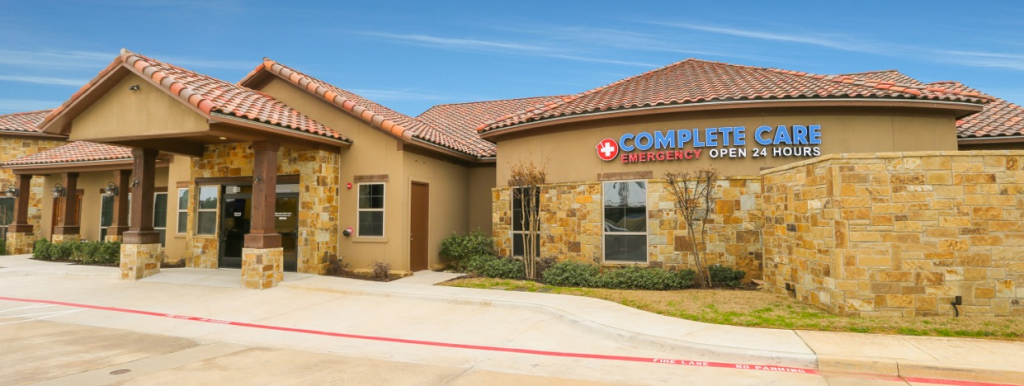When to Go to the ER for High Blood Pressure
Blood Pressure
•
Feb 17, 2021
Reviewed by: Jeffrey Peebles, M.D

Whether you struggle with high blood pressure on a regular basis or have a one-off high reading, it can be difficult to know when to go to the ER for high blood pressure (hypertension). But since a hypertensive emergency can lead to organ damage, it’s important to know when to worry about a blood pressure reading and make the trip to the ER.
Fortunately, there are guidelines you can follow. Here is a list of definitive examples of when to go to the ER for high blood pressure, along with answers to top FAQs regarding high blood pressure.
1. You’re experiencing a hypertensive urgency or hypertensive emergency
Hypertensive urgencies and hypertensive emergencies are by far the most common types of hypertensive crises. The two types of emergencies differ in terms of severity, but both are serious conditions and both instances of when to go to the ER for high blood pressure.
A hypertensive urgency occurs when your blood pressure has reached 180/120 but you are not yet experiencing symptoms or organ failure. A hypertensive urgency may be a temporary spike in blood pressure. If you are not experiencing symptoms, wait five minutes, then take your blood pressure again. If your blood pressure has remained at 180/120, have someone drive you to the ER; you are at-risk for a hypertensive emergency.
A hypertensive emergency occurs when your blood has reached (and likely remained at or above) 180/120 and you are experiencing symptoms. Symptoms include severe chest pain, severe headache, and blurred vision, and may also include symptoms of other medical issues (heart attack, stroke, pulmonary edema, kidney failure) that are caused by or related to the hypertensive emergency. If you are experiencing any of these symptoms in conjunction with a blood pressure reading of 180/120, it is essential that you seek medical treatment immediately.
For a thorough examination of these hypertensive urgency and hypertensive emergency, please see our article,What is a Hypertensive Crisis?
2. You’re experiencing symptoms of extremely high blood pressure but can’t measure your blood pressure
A lot of the guides we see explaining when to go to the emergency room for high blood pressure seem to assume that the average person has a manual sphygmomanometer — the familiar blood pressure measurement device with a pump and cuff — or digital blood pressure reader at home. In reality, these aren’t typical household appliances.
While you can check your pulse manually with your fingers, you can’t check your blood pressure (specifically, the pressure of blood on your arteries) without a blood pressure device. Apps are also notoriously unreliable.
If you are experiencing the symptoms of a hypertensive crisis but don’t have a blood pressure monitor, go to the ER anyway. This is especially true if you know you often have elevated blood pressure or match certain risk factors such as diabetes, lack of exercise, unhealthy diet, regular alcohol or tobacco use, or a genetic history of hypertension in your family.
3. You’re experiencing regular high blood pressure at 20+ weeks pregnant
Many moms-to-be experience slightly elevated blood pressure while pregnant, a condition called gestational hypertension. However, blood pressure readings of 140/90, especially after 20 weeks of pregnancy, can point to a pregnancy complication called preeclampsia. Preeclampsia is thought to be caused by abnormalities in the extra blood vessels that develop to send blood to the placenta. Left untreated, it can lead to serious health complications for both baby and mother, including preterm birth.
To monitor for preeclampsia, your doctor should measure your blood pressure regularly during your prenatal checkups and check for excess protein in your urine (another common symptom of preeclampsia). While preeclampsia can develop slowly, it can also onset suddenly. If you are monitoring your blood pressure at home and notice levels regularly above 140/90 OR if you are experiencing symptoms such as severe headaches or changes in vision, contact your doctor immediately and go to the emergency room.
Why you should go to the ER for high blood pressure
When your blood pressure readings are high enough to indicate a hypertensive crisis, the pressure that your blood is exacting can damage your blood vessels. In particular, high blood pressure can increase your chances for blood clots, cause your blood vessels to leak or burst, and critically reduce the amount of blood that is reaching your organs.
These complications can lead to severe complications, including but not limited to:
- Stroke: Blood pressure-related strain on blood vessels can cause a blood clot (ischaemic stroke) or blood vessels to burst or leak (haemorrhagic stroke) within the brain, causing a stroke.
- Vision loss: Strain on the blood vessels can cause ischemic optic neuropathy (blockage of blood flow to the eye) resulting in damage to the optic nerve and potential vision loss.
- Heart attack: Strain on the blood vessels can cause a blockage of arteries leading to the heart, which results in a heart attack. (If you’re concerned a loved one is experiencing a heart attack, please review our articles Heart Attack Warning Signs and When to Go to the ER for chest pain).
- Heart failure: Heart failure occurs when your blood can no longer pump blood efficiently as it should, eventually stopping due to the strain. Hypertensive crises cause your heart to work very hard and can lead to heart failure.
- Aneurysm: An aneurysm is a bulging of a blood vessel. The pressure exerted on your blood vessels during a hypertensive crisis can cause aneurysm, especially aortic aneurysm. The aorta is the primary artery that carries blood away from your heart.
- Pulmonary edema: Occurs when your heart is too strained to pump out enough of the blood it’s receiving from your heart. Pressure from the strained heart pushes fluid through the blood vessel walls and into your lungs.
- Kidney failure: This typically occurs when you’ve had high blood pressure over a long period of time, as ongoing high blood pressure causes arteries around the kidneys to narrow, weaken, and harden, reducing the amount of blood delivered to your kidneys.
- Sexual dysfunction: High blood pressure can cause erectile dysfunction when damaged blood vessels reduce the amount of blood flow to the penis.
What to do when your blood pressure is high
Lowering your personal blood pressure baseline takes time and requires healthy lifestyle changes. But how do you lower your blood pressure immediately? You should not attempt to manage the type of high blood pressure crises described above with home remedies or self-treatment; hypertensive emergencies require immediate medical attention.
However, if you want to try and lower your blood pressure in between when you recognize that your body is in crisis and when you make it to the ER, the following may help:
- If you have hypertensive medications, take them
- Lie flat on your back (or, if you’re in the car on the way to the ER, put your seat back)
- Close your eyes and focus on taking deep breaths and remaining calm
Again, if you’re experiencing a hypertensive crisis that fits within the examples of when to go to the ER for high blood pressure mentioned above, these remedies should not be used as a replacement to medical intervention.
What will the ER do for high blood pressure?
When you arrive at the ER with high blood pressure, the first thing your physicians will do is try to bring your blood pressure down. Typically, this is done with either oral or intravenous medications. Your doctor will also assess your heart and other organs for potential damage and begin treating any complications that might have arisen. Depending on the severity of your hypertensive crisis, these damages may range from minimal to severe.
Additional hypertensive emergency FAQs
What is considered stroke-level high blood pressure?
Stroke, the blocking, leaking, or bursting of blood vessels that supply blood to the brain, is associated with raised blood pressure levels. While there is not a specific reading of blood pressure number associated with stroke, based on what the American Heart Association has designated as dangerous blood pressure levels, you can say that you are more at risk for stroke if your blood pressure reads at 130/80. For comparison, blood pressure readings of 120/80 are considered healthy.
My child has high blood pressure — should we go to the ER?
While children have different “healthy” blood pressure readings than adults due to their smaller size and weight, the blood pressure reading of 180/120 that indicates a hypertensive crisis in adults also indicates a hypertensive crisis in children. If your child is experiencing these blood pressure levels, they need immediate medical care.
Should I bring my blood pressure medication to the ER?
Yes. The more information your physicians know about what medications you’re taking for blood pressure and at what doses, the better.
When you need to go to the ER for high blood pressure, Complete Care is here
Knowing when to go to the ER for high blood pressure can help you remain calm in a time of crisis, as can knowing what emergency room to go to when you need help. At Complete Care’s freestanding emergency room facilities, we are equipped to take care of all of the emergencies your standard ER handles, but without the wait time. Not only can you rest assured that you will be seen quickly at our facilities, but also that you will be treated with compassion when under our care. We have been nationally recognized for our service.
We have ER locations in both Texas (Austin, Corpus Christi, San Antonio, Dallas/Fort Worth, East Texas, and Lubbock) and Colorado (Colorado Springs and Pueblo). Whether you have an emergency or just a simple health question, we will take complete care of you.
Get in. Get out. Get back to life.
More Helpful Articles by Complete Care:
